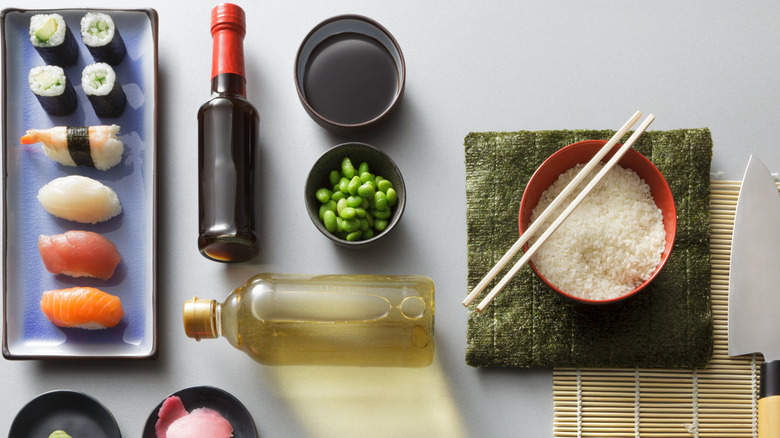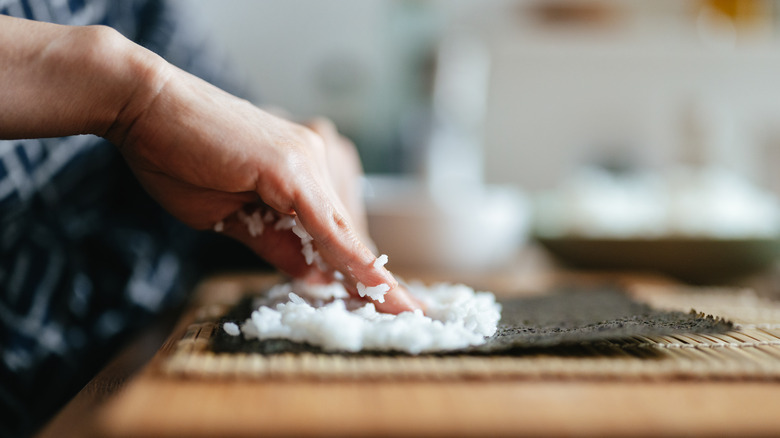The Easiest Way To Seamlessly Bind Homemade Sushi Rolls
If you're a newbie to at-home sushi making, you might be struggling to create a mean maki mouthful that doesn't unravel when sliced and served. Although wetting the top edge of the nori sheet with a touch of water helps to seal the sushi on the final roll, this isn't always 100% effective.
Luckily, we've come across another easy way to seamlessly bind homemade sushi rolls that doesn't require extra ingredients, special tools, or fiddly techniques that take an age to master. And the only thing you'll need on hand is an ingredient you'll be using anyway: cooked sushi rice.
The beauty of sushi rice is that it has an inherently sticky texture because it has a higher starch content than other types of rice, like basmati or arborio. This glutinous consistency almost forms an edible glue that you can use to bond the surface of your nori sheets. That's right, this sticky starch makes the perfect natural adherent to immaculately seal all your favorite varieties of maki, such as spicy tuna, Philadelphia, and California rolls.
How to make neat sushi rolls every time
So, how do you use sushi rice to stick your rolls together? Start by adding your rice and favorite fillings to your sheet of nori (always place it shiny side down because the rice will stick better to the rough side). Then begin to roll it into a cylinder, using either a napkin or bamboo mat as an aid. Just before you reach the end of the seaweed where you'll make the final roll, stop and use your thumb to press a few grains of sticky rice across the entire edge. Make a point of squashing the rice well into the nori to create a sticky, natural binding agent that will keep the seaweed in place.
Once you've made the final roll, wait a few minutes for your sushi to set before slicing it into pieces. This resting period gives the sticky rice, delicious fillings, and salty nori enough time to gel together, resulting in a crisper, neater cut. As always, use a sharp knife to cut your sushi roll to encourage a tidy finish. And if your sushi rolls are still coming apart after sealing them with rice and giving them plenty of time to set, you may have overstuffed them. Next time you plan on preparing sushi at home, try using less rice to make a flawless, flavorful bite that looks as perfect as it tastes and doesn't come apart when sliced.

